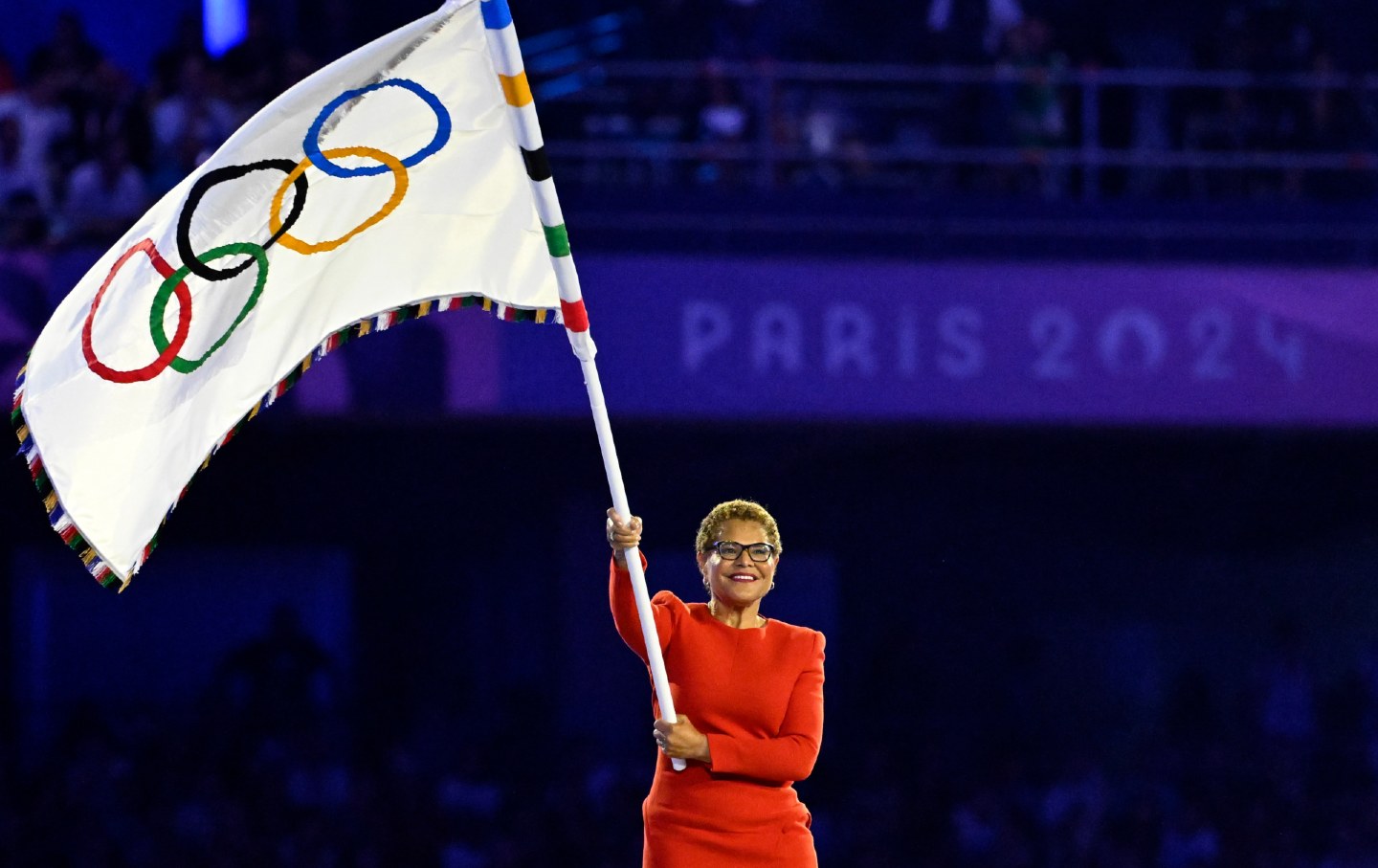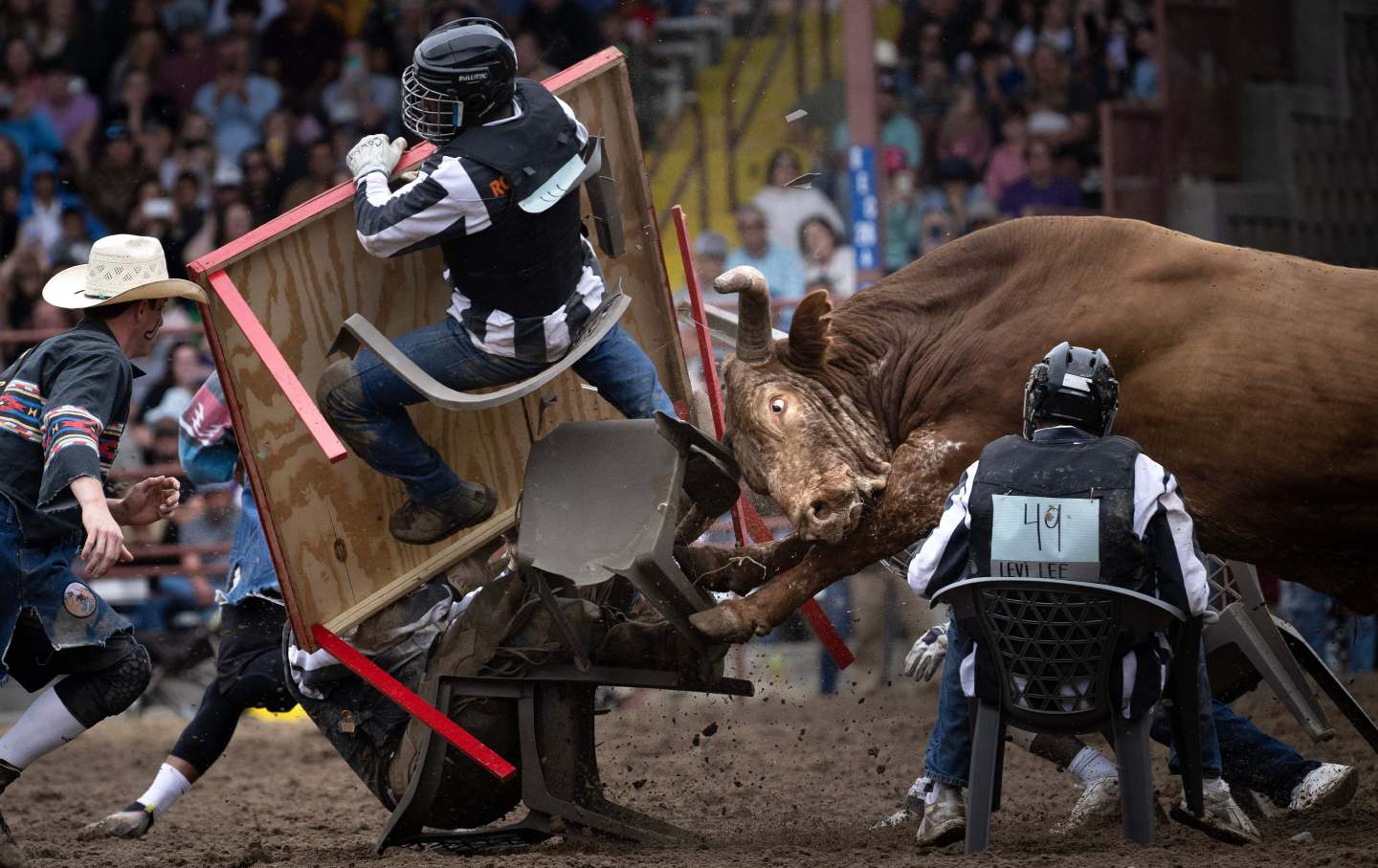Abolish College Football
NCAA football, especially at major universities, is among the most exploitative and harmful institutions in the United States.

A brain scan of a football player who was diagnosed with CTE, the degenerative brain injury. Every 2.6 years of participation in football doubles the chances of contracting CTE.
(Jeff Siner / Charlotte Observer / MCT via Getty Images)“I just realized all of college football’s like this really big pyramid scheme built on a foundation of cheaply paid labor.” That’s how a former player from a major university described the sport to us in one of the interviews we conducted for our book The End of College Football: On the Human Cost of an All-American Game.
What former players told us made it clear that college football is among the most exploitative and harmful institutions in the United States. Coaches, athletic department officials, university presidents, and members of the sports-media complex all richly benefit, as barely compensated players bear the life-altering costs. The solution to the problem of college football is simple: Abolish it.
There are many arguments to be made against this form of hard labor dressed up as sport, but our research has led us to focus on four: the questions of compensation, health and safety, racist plantation dynamics, and pervasive coercion and abuse.
Some pundits are calling this moment in college sports the Big Money Era, insinuating that athletes are now swimming in cash thanks to name, image, and likeness (NIL) payments and a new (contested) settlement that may see changes to the funding model of the sport. But a fact remains: Despite producing as much as hundreds of millions of dollars for athletic departments at some schools, college football players are not paid a wage by those institutions for their labor. Instead, they receive compensation in the form of a desiccated education (via a scholarship) that bears little resemblance to the experience enjoyed by their nonathlete peers.
One former player told us, “The biggest shit that gets me pissed is when people say we get paid enough. That, like, we get paid with our education and that’s like ‘priceless’ or whatever shit they say. That’s a fucking joke, bruh. Like, first off, the value I am bringing as a football player is worth way fucking more than college tuition and cutting me a check for rent. Do history majors fucking sell out [redacted stadium]? Do fucking computer scientists get 80,000 people out to watch them fucking code? The worst is when guys like [Tim] Tebow, or whoever else used to play, get up on TV and tell us we should be grateful for the opportunity of playing college football. Did his degree get him a job as a TV guy? Naw man, his national titles did.… It’s fucked that coaches drive around in Range Rovers and shit and make millions of dollars, and I can’t even get a plate of tacos without hiding it or getting in trouble.”
In fact, because college football players are required to participate in approximately 40 hours per week of athletic obligations that are prioritized over all else, they must squeeze in classes around practices and miss coursework for games. They are also funneled into classes that are perceived to be easy, and they certainly don’t have the time to engage in study abroad or internships—summer means arduous training camps, after all. Above all, they are required to engage in maximally strenuous physical work that leaves them exhausted and makes intellectual engagement difficult if not impossible.
Another player explained, “Education is not the most important thing in college football. That’s just the reality. It is only a means to an end. To keep you on campus so that you can play, that’s just the facts of college football.”
And yet, despite the dubious morality of the economic exploitation of college football players, that is not the worst part of the devil’s bargain they are compelled to make with universities in return for access. No, that would instead be the fact that participation in college football, like all tackle football, is a form of human sacrifice. While there are cases of deaths—Jordan McNair’s tragic passing from overtraining and heat exhaustion is one, as is the death this summer of Bucknell University player Calvin Dickey Jr.; and in the high school ranks and below at least six players died from football at school this summer—we are mostly talking about the slower deaths of football.
Popular
“swipe left below to view more authors”Swipe →Every 2.6 years of participation in football doubles the chances of contracting the degenerative brain condition chronic traumatic encephalopathy (CTE). Moreover, football players have an increased chance of developing Parkinson’s disease—61 percent higher compared to athletes in other organized sports. That risk accelerates to nearly 300 percent higher in those at the college/pro level. What this means is that it isn’t possible to participate in football long-term—and recall that in many places players begin participating in tackle as young as 5 years old—without accruing devastating physical harm. It’s difficult to rationalize why universities putatively in the business of educating and developing students aren’t perceived as compromising the terms of their accreditation by exposing them to this level of harm.
One former player told us that he endured 10 concussions: “I could barely do school.… I would forget what I was talking about mid-sentence. I’d be forgetting everything that happened like 10 minutes ago. I would just completely zone out sometimes. It was like I was halfway there. I couldn’t really control it.”
Another former player explained, “I definitely have problems with depression now.… it came to a point, three years ago.… I went and sought out advice and said, ‘Look, a change in my attitude, my willingness, my desire to do things, just kind of diminished.’ And so, yeah, I’ve kind of always been curious to know, has that also been something because of repetition of hits that I did take? And I’m definitely convinced there is.”
The exploitative and harmful dynamics of college football at its highest level are not borne equally across demographics. As of 2019–20, only 5.7 percent of the overall population at the predominantly white institutions that make up the biggest conferences in college football were Black, a disproportionately low figure relative to the 55.7 percent of football players who were Black. Yet the beneficiaries of the sport—those actually compensated by universities, including coaches and athletic department officials—are disproportionately white. This produces what has been estimated to be a $1.2–1.4 billion annual racial transfer of wealth from mostly Black players to mostly white coaches and administrators. At the same time, those Black athletes are often made to feel as if they don’t belong or deserve to be members of the university community. It’s not an exaggeration to speak of plantation dynamics.
One former player explained, “They never really said the N-word.… But it was all like microaggressions. And you could see that the only reason that they’re around this many Black people is because they make them millions of dollars.”
He later added, “The fact that the football team is like 90 percent Black, and you walk on campus, and it’s white people everywhere, white professors, white students, like that is systemic racism that we’ve got to live through.… I’m out there grinding with my brothers for free while a bunch of white people make money. If that’s not systemic racism, then I don’t know what is.”
Indeed, this must be understood within a broader system of racial capitalism that has historically denied access and opportunity particularly to Black Americans such that many players can rationally see college football as one of the best available pathways to class mobility. We refer to this systemic pressure as structural coercion, and it means that nothing about college football should be understood as free, fair, or consensual. The choice to exchange an arduous, violent, and harmful form of athletic labor for access to resources like a university education that would otherwise be unavailable is not a choice freely made.
In truth, abolition isn’t enough for an institution so defined by moral depravity. We must also acknowledge the investments made by players past and present in this sport. If there is to be an end to college football, it must be accompanied by reparations from universities and the sports-media complex to compensate for the harm from which they have so richly benefited.








